小学英语小升初英语时态复习课件
图片预览
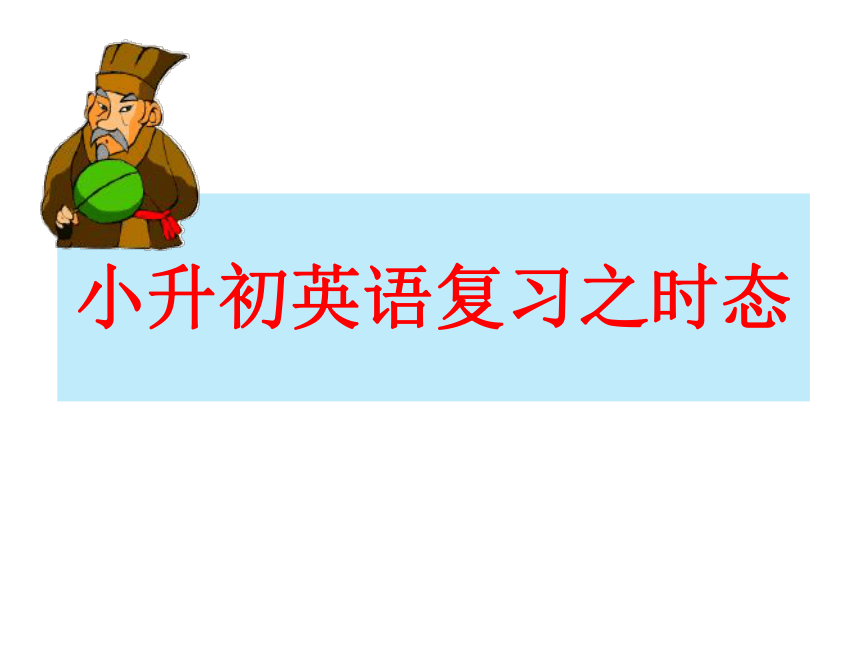
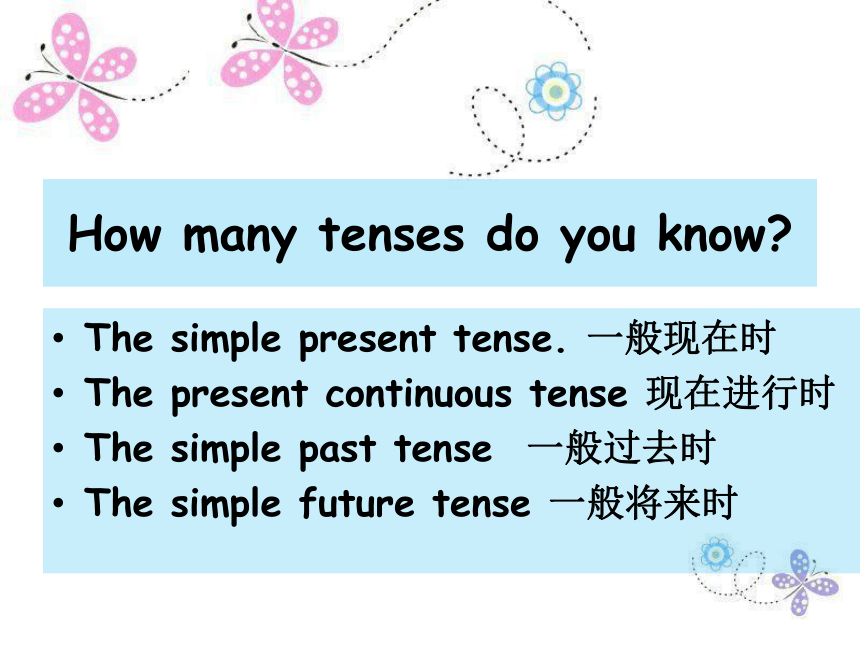
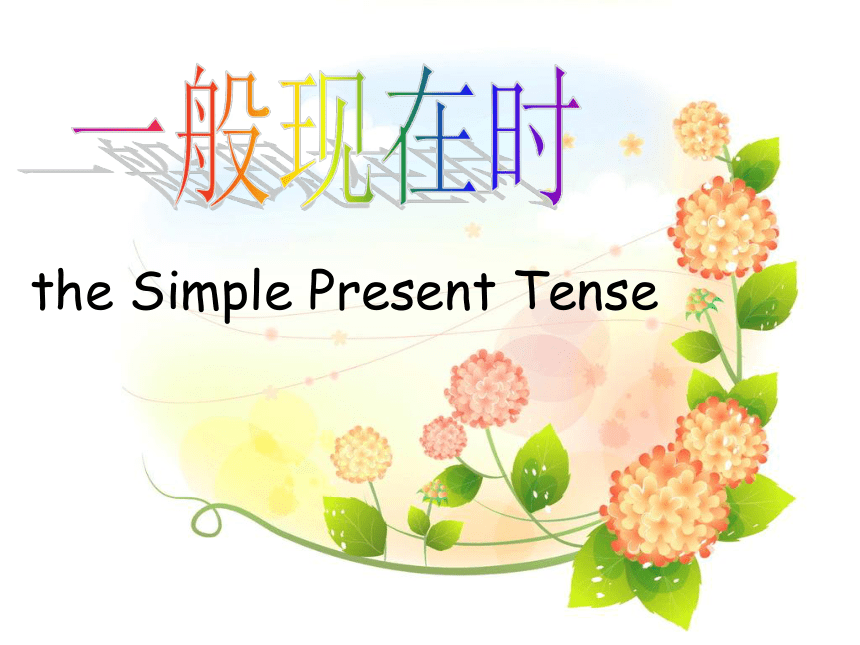
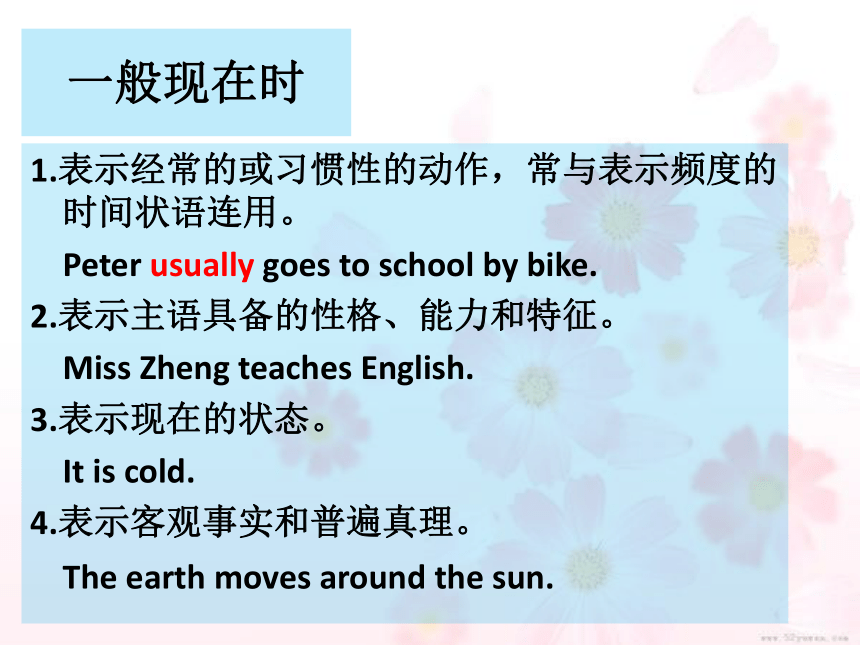
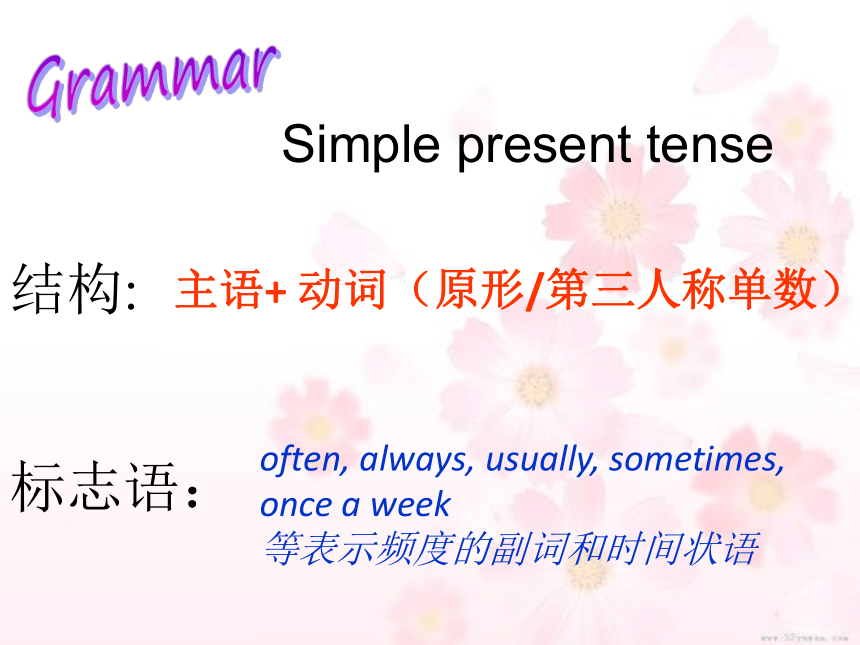
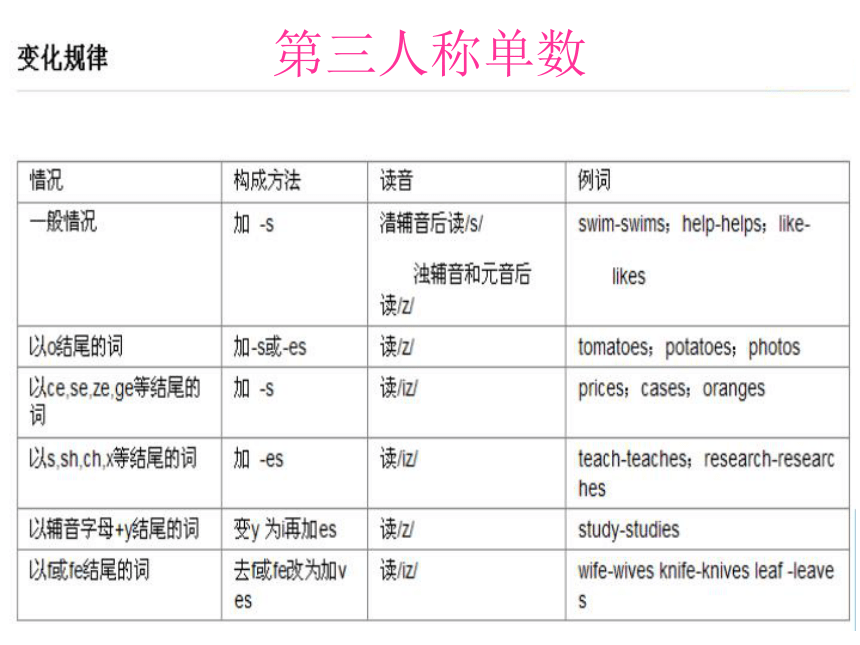
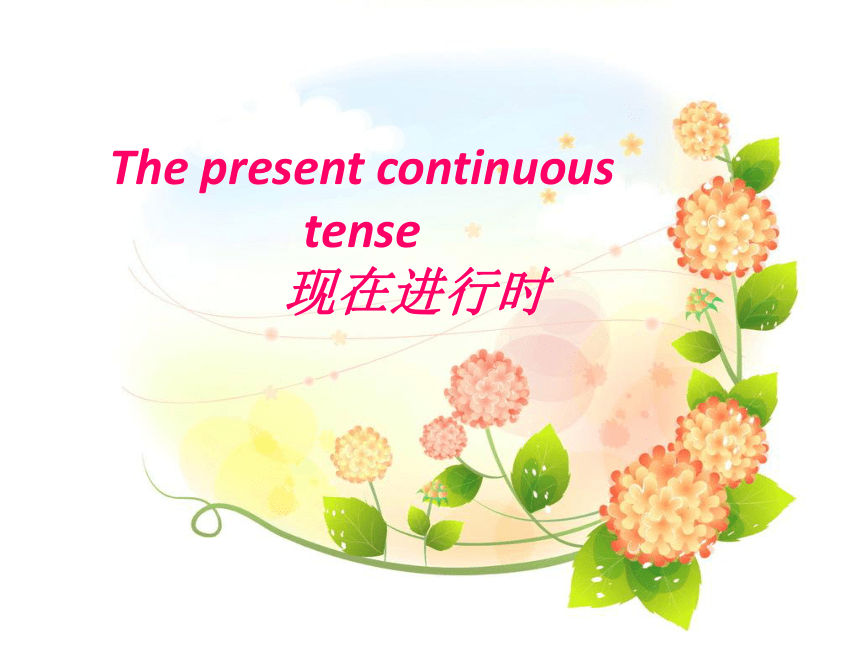
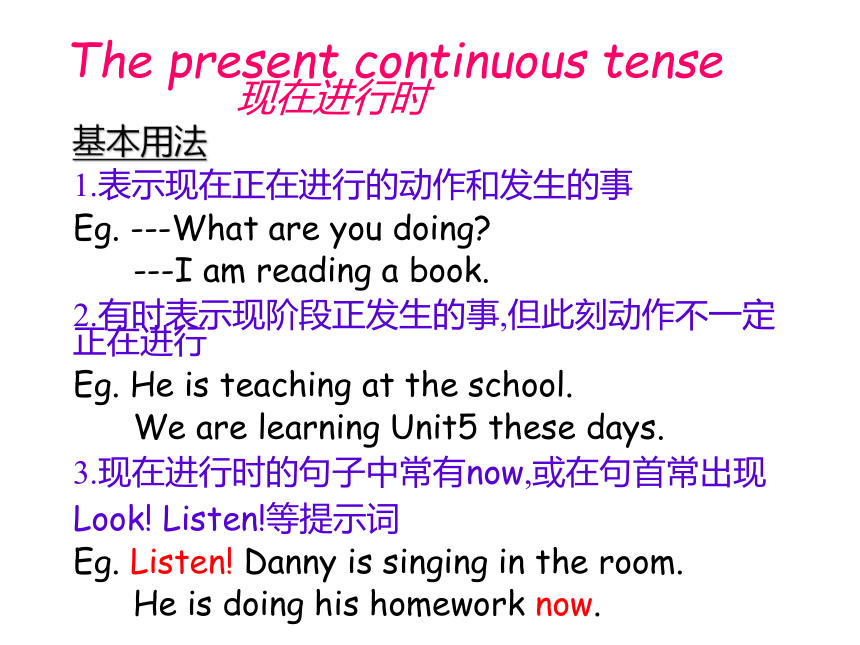
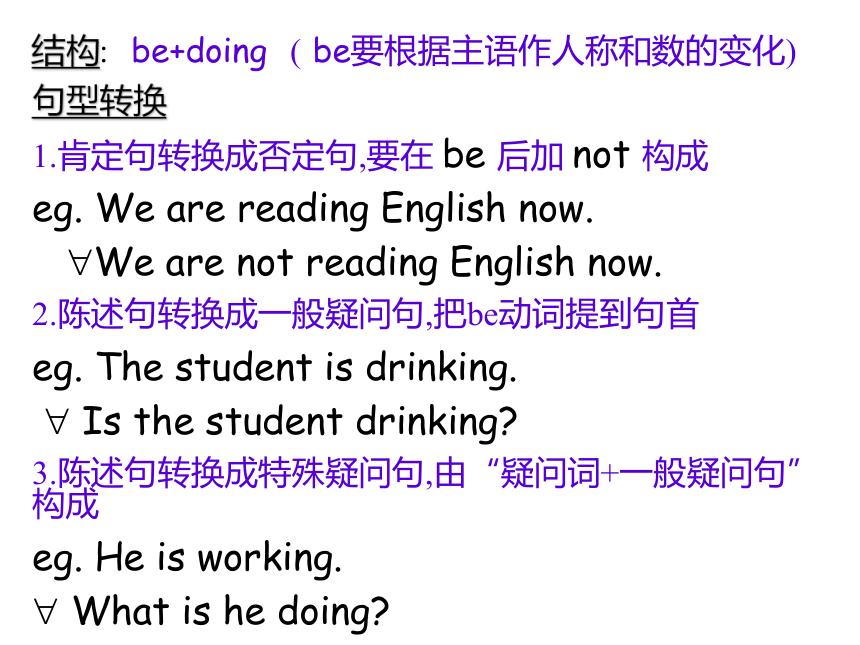
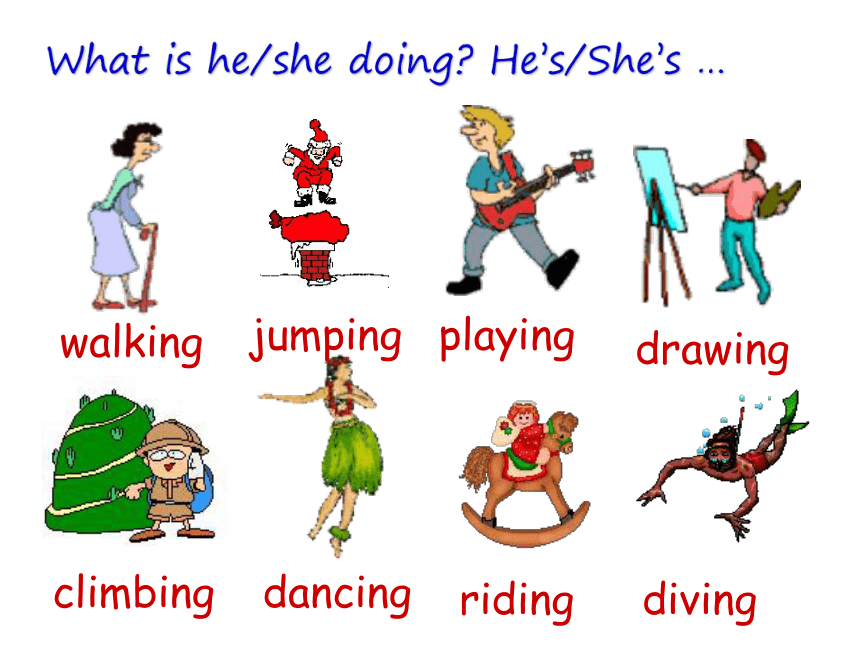
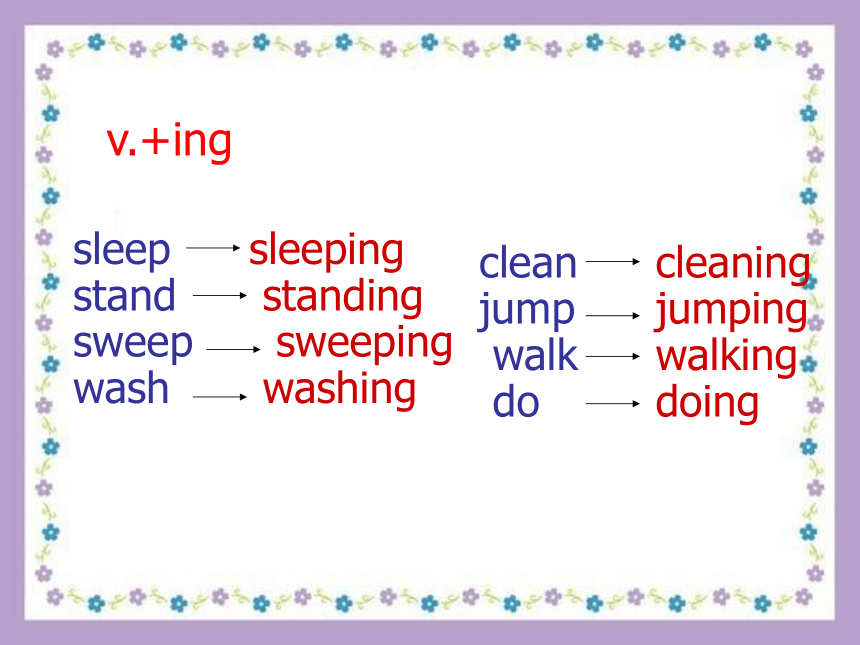
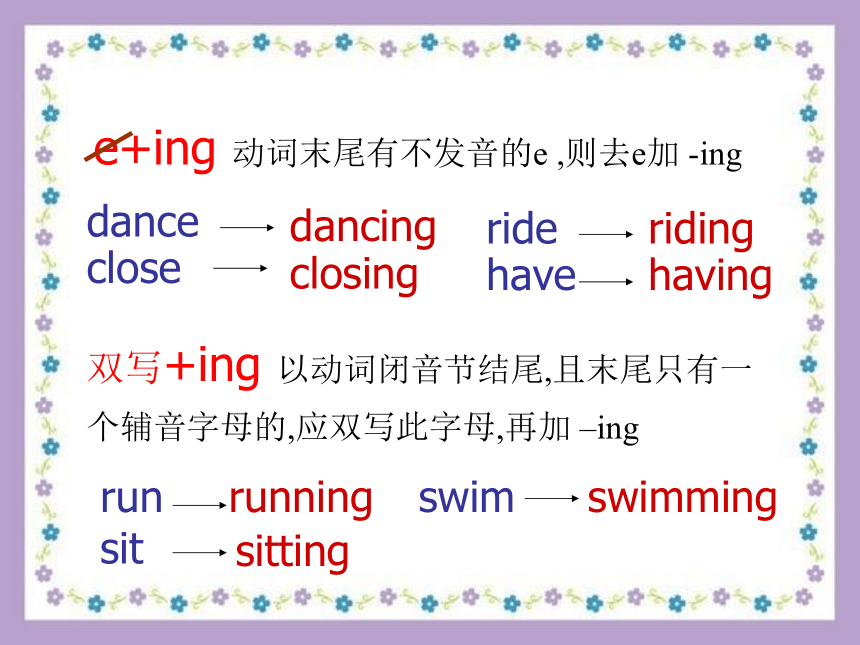
文档简介
课件30张PPT。小升初英语复习之时态How many tenses do you know?The simple present tense. 一般现在时
The present continuous tense 现在进行时
The simple past tense 一般过去时
The simple future tense 一般将来时一般现在时the Simple Present Tense 一般现在时1.表示经常的或习惯性的动作,常与表示频度的时间状语连用。
Peter usually goes to school by bike.
2.表示主语具备的性格、能力和特征。
Miss Zheng teaches English.
3.表示现在的状态。
It is cold.
4.表示客观事实和普遍真理。
The earth moves around the sun. Grammar结构:
标志语:主语+ 动词(原形/第三人称单数)often, always, usually, sometimes, once a week
等表示频度的副词和时间状语Simple present tense第三人称单数The present continuous tense 现在进行时The present continuous tense
现在进行时基本用法
1.表示现在正在进行的动作和发生的事
Eg. ---What are you doing?
---I am reading a book.
2.有时表示现阶段正发生的事,但此刻动作不一定正在进行
Eg. He is teaching at the school.
We are learning Unit5 these days.
3.现在进行时的句子中常有now,或在句首常出现
Look! Listen!等提示词
Eg. Listen! Danny is singing in the room.
He is doing his homework now.结构: be+doing ( be要根据主语作人称和数的变化)
句型转换
1.肯定句转换成否定句,要在 be 后加 not 构成
eg. We are reading English now.
?We are not reading English now.
2.陈述句转换成一般疑问句,把be动词提到句首
eg. The student is drinking.
? Is the student drinking?
3.陈述句转换成特殊疑问句,由“疑问词+一般疑问句”构成
eg. He is working.
? What is he doing?walkingridingdrawingjumpingdivingdancingclimbingplayingWhat is he/she doing? He’s/She’s …v.+ingsleep
stand
sweep
washsleeping
standing
sweeping
washing clean
jump
walk
docleaning
jumping
walking
doingrunningswimswimmingrun
sitsittingdancing
closing riding
having双写+ing 以动词闭音节结尾,且末尾只有一个辅音字母的,应双写此字母,再加 –ing dance
closeride
have 口诀教你学doing
进行时很好记,be加动词-ing;
直加双写去哑e,分词构成须仔细;
别说 be 无词义,主语和它最亲密;
变疑问 be 提前,否定 not 再后添;
何时要用进行时 look,listen,now标记.The simple past tense一般过去时一般过去时(simple past tense)表示
过去某个时间里发生的动作或状态;
过去习惯性、经常性的动作、行为;
过去主语所具备的能力和性格。 The simple past tense基本结构: 主语+动词过去式+其他 The simple past tense时间状语
ago---two hours ago, three days ago
yesterday, the day before yesterday
last week/year/night/month…
just now, long ago, once upon a time.The simple past tense否定形式
① was/were+not;
② 在行为动词前加didn't,同时还原行为动词
一般疑问句
Did+主语+do+其他+?
She often came to help us last year.
I was not a teacher five years ago.
I didn't know you were so busy just now.
Did you go to school yesterday?动词变化规则规则变化:
1.直:直接加ed: work- worked ,
2.去:以e结尾的,去e加ed: live - lived
3 双:以重读闭音节结尾的,双写加ed: stop stopped
4 改:以辅音字母+y结尾的,变y为i加ed: study-studied
直去双改 动词变化规则 --不规则变化: have/has -- had
eat--ate
see—saw
am/is—was
are—were
go—went
do—did
take—took
run—ran
sit---sat
feel--felt
get—gotmeet—met
catch—caught
buy—bought
think—thought
say—said
give—gave
put—put
write—wrote
swim—swam
keep- kept
sleep- slept
read- readThe Simple Future Tense 一般将来时 一般将来时 (the future tense)
一般将来时表示在将来某一时间将要发生的动作或存在的状态,也可表示将来某一段时间内经常发生的动作或存在的状态。它常与表示将来的时间状语如:
soon, tomorrow, next week, in a few days, the day after tomorrow, this evening等 结构:be going to +动词原形
will +动词原形be going to 结构:1定义:3结构:2标志:4例句:表示将要发生的动作,含有“打算”的意思。tomorrow , next week/Sunday , this evening…主语 + be going to + 动词的原形She is going to play football.
He is going to go fishing.
It is going to do its homework.next weekWhat is he going to do next week?He is going to go fishing.What is the boy going to do this evening?He is going to play computer.He is going to do his homework.this eveningWhat is the cat going to
do this evening?It is going to watch TV.What is the girl going to do tomorrow?She is going to dance tomorrow.What are they going to do tomorrow ?They are going to play basketball. 我们除了用“be going to+动词原形”表示一般将来时外,我们还可以用—————————表示一般将来时.“will+动词原形” will 引导的一般将来时:表示将来发生的动作或存在的状态,最基本的结构:
will + 动词原形
e.g.
I will go to university after six years .
六年后我将上大学了。一般将来时的标志:willFinish the sentences肯定句 Students will go to school in the future.
主语+ will +动词原形+(宾语)+其他
改为否定句:____________________________
在will 的后面加not即可。will not 可缩写为 won’t
改为一般疑问句:____________________________________
把will 提到句子主语之前,结尾变问号。
针对Students改为特殊疑问句:____________________________________
特殊疑问词+will +主语+动词原形+其他?Students won’t go to school in the future.Will students go to school in the future?Who will go to school in the future ?
The present continuous tense 现在进行时
The simple past tense 一般过去时
The simple future tense 一般将来时一般现在时the Simple Present Tense 一般现在时1.表示经常的或习惯性的动作,常与表示频度的时间状语连用。
Peter usually goes to school by bike.
2.表示主语具备的性格、能力和特征。
Miss Zheng teaches English.
3.表示现在的状态。
It is cold.
4.表示客观事实和普遍真理。
The earth moves around the sun. Grammar结构:
标志语:主语+ 动词(原形/第三人称单数)often, always, usually, sometimes, once a week
等表示频度的副词和时间状语Simple present tense第三人称单数The present continuous tense 现在进行时The present continuous tense
现在进行时基本用法
1.表示现在正在进行的动作和发生的事
Eg. ---What are you doing?
---I am reading a book.
2.有时表示现阶段正发生的事,但此刻动作不一定正在进行
Eg. He is teaching at the school.
We are learning Unit5 these days.
3.现在进行时的句子中常有now,或在句首常出现
Look! Listen!等提示词
Eg. Listen! Danny is singing in the room.
He is doing his homework now.结构: be+doing ( be要根据主语作人称和数的变化)
句型转换
1.肯定句转换成否定句,要在 be 后加 not 构成
eg. We are reading English now.
?We are not reading English now.
2.陈述句转换成一般疑问句,把be动词提到句首
eg. The student is drinking.
? Is the student drinking?
3.陈述句转换成特殊疑问句,由“疑问词+一般疑问句”构成
eg. He is working.
? What is he doing?walkingridingdrawingjumpingdivingdancingclimbingplayingWhat is he/she doing? He’s/She’s …v.+ingsleep
stand
sweep
washsleeping
standing
sweeping
washing clean
jump
walk
docleaning
jumping
walking
doingrunningswimswimmingrun
sitsittingdancing
closing riding
having双写+ing 以动词闭音节结尾,且末尾只有一个辅音字母的,应双写此字母,再加 –ing dance
closeride
have 口诀教你学doing
进行时很好记,be加动词-ing;
直加双写去哑e,分词构成须仔细;
别说 be 无词义,主语和它最亲密;
变疑问 be 提前,否定 not 再后添;
何时要用进行时 look,listen,now标记.The simple past tense一般过去时一般过去时(simple past tense)表示
过去某个时间里发生的动作或状态;
过去习惯性、经常性的动作、行为;
过去主语所具备的能力和性格。 The simple past tense基本结构: 主语+动词过去式+其他 The simple past tense时间状语
ago---two hours ago, three days ago
yesterday, the day before yesterday
last week/year/night/month…
just now, long ago, once upon a time.The simple past tense否定形式
① was/were+not;
② 在行为动词前加didn't,同时还原行为动词
一般疑问句
Did+主语+do+其他+?
She often came to help us last year.
I was not a teacher five years ago.
I didn't know you were so busy just now.
Did you go to school yesterday?动词变化规则规则变化:
1.直:直接加ed: work- worked ,
2.去:以e结尾的,去e加ed: live - lived
3 双:以重读闭音节结尾的,双写加ed: stop stopped
4 改:以辅音字母+y结尾的,变y为i加ed: study-studied
直去双改 动词变化规则 --不规则变化: have/has -- had
eat--ate
see—saw
am/is—was
are—were
go—went
do—did
take—took
run—ran
sit---sat
feel--felt
get—gotmeet—met
catch—caught
buy—bought
think—thought
say—said
give—gave
put—put
write—wrote
swim—swam
keep- kept
sleep- slept
read- readThe Simple Future Tense 一般将来时 一般将来时 (the future tense)
一般将来时表示在将来某一时间将要发生的动作或存在的状态,也可表示将来某一段时间内经常发生的动作或存在的状态。它常与表示将来的时间状语如:
soon, tomorrow, next week, in a few days, the day after tomorrow, this evening等 结构:be going to +动词原形
will +动词原形be going to 结构:1定义:3结构:2标志:4例句:表示将要发生的动作,含有“打算”的意思。tomorrow , next week/Sunday , this evening…主语 + be going to + 动词的原形She is going to play football.
He is going to go fishing.
It is going to do its homework.next weekWhat is he going to do next week?He is going to go fishing.What is the boy going to do this evening?He is going to play computer.He is going to do his homework.this eveningWhat is the cat going to
do this evening?It is going to watch TV.What is the girl going to do tomorrow?She is going to dance tomorrow.What are they going to do tomorrow ?They are going to play basketball. 我们除了用“be going to+动词原形”表示一般将来时外,我们还可以用—————————表示一般将来时.“will+动词原形” will 引导的一般将来时:表示将来发生的动作或存在的状态,最基本的结构:
will + 动词原形
e.g.
I will go to university after six years .
六年后我将上大学了。一般将来时的标志:willFinish the sentences肯定句 Students will go to school in the future.
主语+ will +动词原形+(宾语)+其他
改为否定句:____________________________
在will 的后面加not即可。will not 可缩写为 won’t
改为一般疑问句:____________________________________
把will 提到句子主语之前,结尾变问号。
针对Students改为特殊疑问句:____________________________________
特殊疑问词+will +主语+动词原形+其他?Students won’t go to school in the future.Will students go to school in the future?Who will go to school in the future ?
